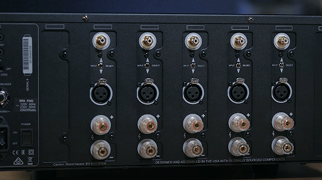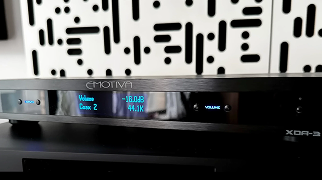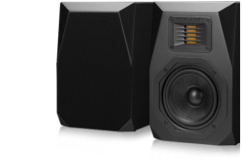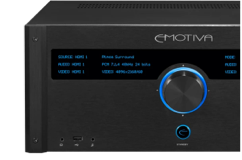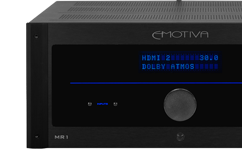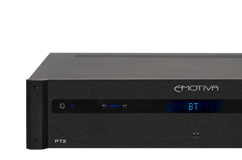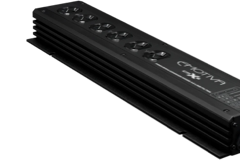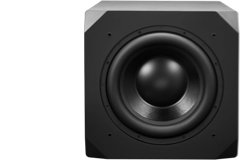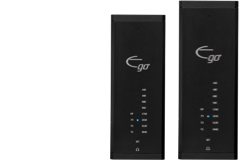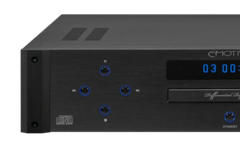
Selecting The Perfect Subwoofer
There are a lot of things you need to think about when selecting the best subwoofer to go with your system. There’s also a lot of audiophile folklore on the subject, and not all of it is useful or accurate. We’re going to explain what most of the important stuff actually means, as well as touch on a few of the common myths about subwoofers, and explain the reality behind a few of them.
Music Or Movies?
Some subwoofers deliver clean smooth bass, while others make enough thump boom bang to rattle your entire house, but it’s all sort of a loud blurry rumble. Because of this, many people believe that, when you select a sub, you have to choose between a sub that’s good for music, and one that’s good for movie special effects. Although there are a few subs out there that really only work well for one or the other, a modern high quality sub should sound equally good with both music and movies, so you really don’t have to compromise any more.

How Loud?
Only you know how loud you like to listen to music and movies. Maybe you have a home theater built like a concrete bunker, and like to play your adventure movies at epic levels, or maybe you listen to quiet ensemble music, and just don’t want to miss the bottom registers of any of the instruments. The point is that, while you should obviously choose a sub that can play as loudly as you need it to, you shouldn’t go overboard. You don’t gain much by purchasing a sub that’s much bigger, plays louder, and is more expensive, than what you actually need.
The generally accepted wisdom is that a subwoofer shouldn’t make an obvious contribution. You should notice that something’s missing when you turn the sub off, but you shouldn’t really notice it while it’s running. The sub is not supposed to roar at you from its corner of the room.
How Big And How Many?
Subwoofers obviously come in different sizes and, all else being equal, a larger sub, with a larger driver, in a larger cabinet, with a more powerful amplifier, will be able to play lower and louder. However, when comparing different types of subs, made by different companies, this rule may not hold true. Some really powerful small subs deliver an amazing amount of output; and not all big subs are powerful or go really deep. You really need to look at each one, read the reviews, check out the specs, and see what each one is actually capable of.
There are several reasons why you might want to use two or more subs instead of one. In theory, if you configure it correctly, you shouldn’t be able to hear where a sub is located – but, in practice, sometimes you can still tell. If that happens, you may find that having stereo subs, arranged symmetrically, sounds better than one in the center of the front or rear wall. Conversely, sometimes you can’t find a good spot in the room for one sub, but you can find places where you can put two subs so that their weaknesses and strengths overlap, and they sound really great as a pair. If you look online you’ll find lots of complicated, and often confusing, arguments in favor of each of these options. However, for most people, one sub will do the job; and, if you buy one, you can always add a second one later if you find you need it.

Sealed, Ported, Or Passive Radiator?
There are three basic types of subwoofers. A sealed subwoofer has a single driver or pair of drivers in a sealed cabinet. The amplifier pushes the speaker cone back and forth, and the air pressure inside the cabinet acts as part of the spring returning it to its rest position. A ported subwoofer has one or two drivers, in a cabinet that is otherwise sealed, but has a tuned opening – usually a tube or a slot. The air in the tuned opening resonates with the movement of the speaker cone, allowing some of the energy from the rear of the cone to be turned into useful sound, which increases the output, and helping to control and minimize the movement of the cone at the tuned frequency. All else being equal, a sealed subwoofer will typically go lower, and have a low frequency response that rolls off more slowly, while a ported sub will be more efficient, and go down to its tuned frequently very solidly, but roll off much more quickly below that. A passive radiator, or drone cone, is really just a special speaker cone with no motor electronics attached to it, and acts very much like a very long tube, so a sub with a passive radiator is really just a variation on a tuned cabinet type sub.
However, while that’s all very interesting, you usually don’t need to worry about it when choosing a good quality sub. While the flaws in poorly designed subs of either type are different, both are quite capable of delivering really good performance if designed correctly. About the only thing worth considering is that, if you listen to vinyl, ported designs often have problems when asked to handle very low notes outside of their normal operating range, so they may overload or have other problems if asked to accept the subsonic rumble caused by a warped record album.
Powered Or Passive?
In the old days, most subwoofers were like regular speakers, and had to be powered by a separate amplifier. Today, almost all subwoofers are powered, which simply means that they have their own amplifier built in. If you see a sub with a line level input, like you normally see on amplifiers, then it’s a powered sub.
Share Post



